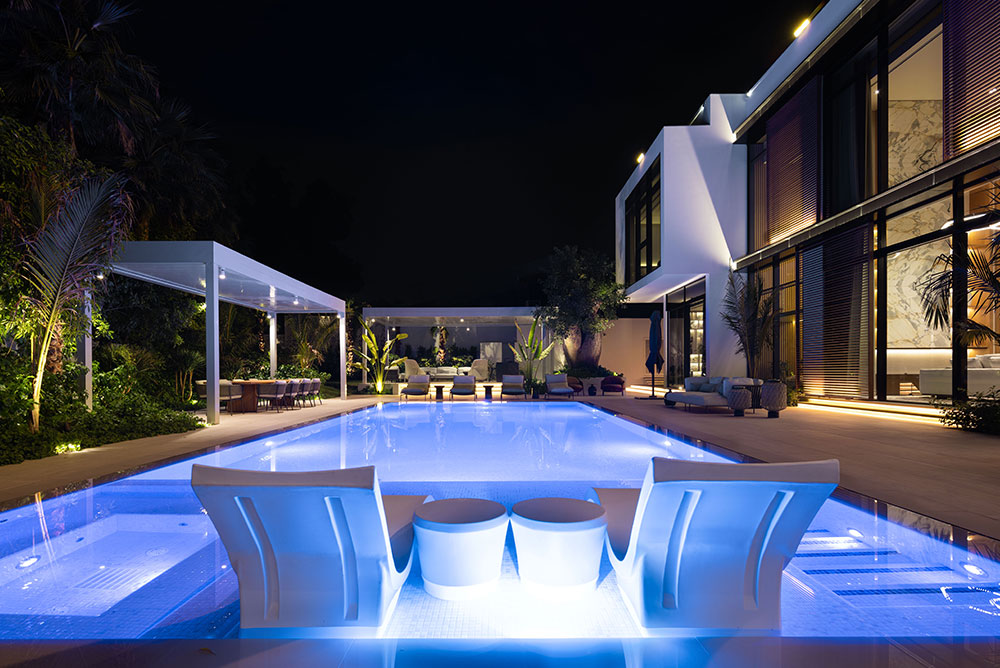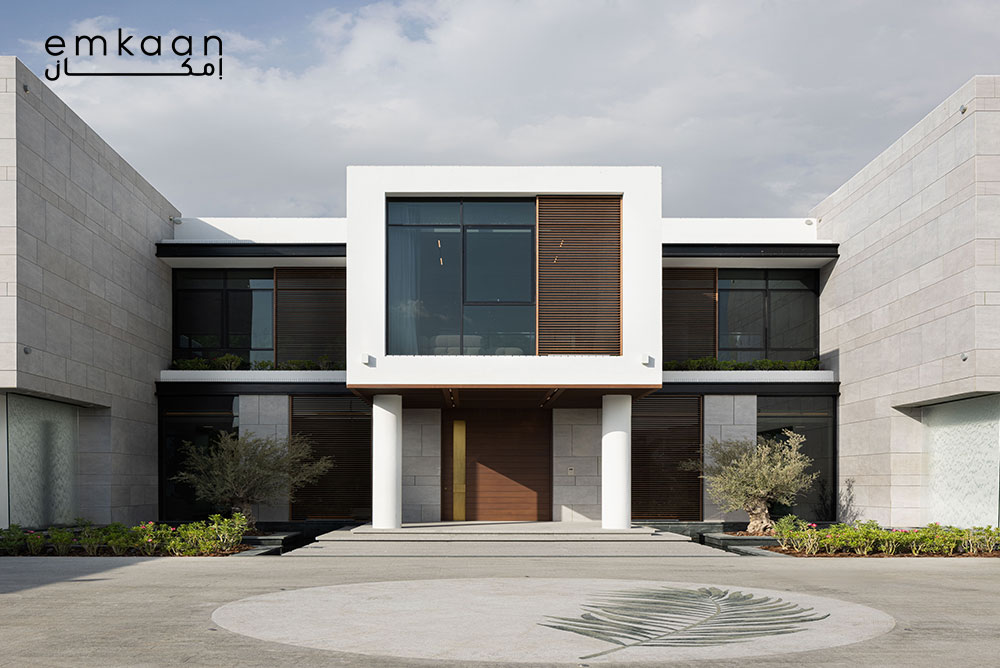Key Elements to Consider while Designing a Multi-Generational Villa
Everyone dreams of a custom home that serves multiple purposes. Well, after all, it grows with you in the future. So, how about a space with multi-generational home designs? A multi-gen home is a balancing act of personal space and family bonding. That’s not all.
Multi-generational home design focuses on a range of design principles, including flexible layouts, soundproofing, and other key features. In this blog, you will learn about such details.
Accessibility Essentials When Building a Multi-Generational Home
From courtyard multi-generational homes that encourage open-air gatherings to communal living house plans that balance privacy and togetherness, the design choices shape how families bond across generations.
Go through the following designs for multi-generational house plans:
|
Elements for Multi-Generational House Plans |
Characteristics |
|
Creating Private Spaces |
Multi-generational home design should prioritize privacy through separate entrances, en-suites, and quiet areas like home offices or study rooms. |
|
Shared Spaces |
Communal living house plans must include shared areas that encourage bonding across all generations, from children to grandparents. |
|
Flexible Layouts |
Floor plans in multi-generational house designs should adapt to evolving family needs, allowing for seamless reconfiguration over time. |
|
Accessibility Features |
Wider doorways, ramps, and accessible bathrooms ensure comfort for aging family members in a multi-generational house. |
|
Separate Living Units |
Courtyard multi-generational homes and in-law suites enable families to live together while maintaining their independence. |
|
Maximizing Storage Solutions |
Modular furniture and hidden storage options make multi-generational home designs functional and clutter-free. |
|
Outdoor Spaces for All |
Gardens and outdoor zones should be safe, accessible, and engaging, with features that promote play, relaxation, and family activities. |
Building a Multi-Generational Home Around Family, Comfort, and Connection
Is building a multi-generational home influenced by aging populations, finances, or changing family dynamics? Or do people prefer this way of life because of its benefits?
Multi-generational home designs accommodate various designs and aesthetic sensibilities of each generation. Such designs follow principles that align tradition and modernity, thereby bridging the gap between different layouts.
Also Read: Design Principles To Consider While Building A Modern Villa In Dubai
Why Multi-Generational House Plans Are on the Rise
With rising property prices and evolving family dynamics, investing in a multi-generational house plan not only ensures comfort for every generation but also adds long-term property value through flexible living arrangements.
Due to the following reasons, a multi-generational house is on the rise:
- Strengthened family bonds through daily interactions
- Improved emotional well-being since family members remain closely connected
- Reduced living expenses and financial security for aging parents
- Increased property investment value through the incorporation of flexible living arrangements
- Accommodation of changing family dynamics
- Rising property prices are making it practical to invest in larger homes
Whether you are building a multi-generational home or exploring multi-generational house plans, the key lies in designing spaces that adapt to evolving needs. A villa designed this way doesn’t just house a family; it creates a sense of belonging and nurtures a legacy with memories.
Design Considerations for Multi-Generational House Plans
Multi-generational home designs require a different approach. Thoughtful planning with the right balance of privacy and shared spaces goes into uniting the entire volume physically and visually.
Here is how you can plan a multi-generational house:
1. Creating Private Spaces
Multi-generational home designs offer separate entrances or en-suites for each generation living in it. This adds a sense of privacy while ensuring nobody else in the household gets disturbed.
You can also incorporate a dedicated home office and study area throughout the home where traffic and noise are minimal for better concentration.
2. Shared Spaces
It is essential to create an accessible space that fosters socialization. When planning multi-generational home designs, ensure the space offers something for everyone in the family, from young children to grandparents.
3. Flexible Layouts
Multi-generational house plans adapt to different family structures. Flexible floor plans help accommodate the changing needs that arise from other living arrangements.
4. Accessibility Features
Design features such as wider doorways, ramps, and accessible bathrooms contribute to the overall accessibility of the home. For larger residences, consider the steep terrain conditions and other vertical movement that may create challenges for older adults.
5. Separate Living Units
Multi-generational home designs allow separate living units within the same structure. The house plan will offer specific wings or floors for different generations. The inclusion of an ‘in-law suite’ tops the list for ensuring all adults living in the home have their own individual area.
6. Maximizing Storage Solutions
Space is a major concern for the ones thinking of building a multi-generational home. Modular furniture is an organized and functional option for an added discrete storage.
7. Outdoor Space for Every Generation
Building a multi-generational home requires removing hazards and guaranteeing effortless movement with even, slip-resistant walkways. Use compacted gravel or smooth pavers in play areas, and arrange adult seating for conversation nearby.
You can also add fragrant, textured plants to attract pollinators. Incorporate interactive features such as a chalkboard wall or bird feeders.
Also Read: Biophilic Design: The Art of Integrating Nature into Modern Interiors

Design Mistakes That Can Break a Multi-Generational Home
Designing a multi-generational house requires more than just extra bedrooms. However, certain design oversights can make daily living stressful instead of seamless. From neglecting personal zones to overlooking soundproofing, these mistakes can disrupt family balance and reduce long-term value.
To help you plan wisely, here are some common multi-generational home design mistakes you should avoid:
No Defined Personal Zones
Multi-generational house plans without defined personal zones cause stress. So, do not skip privacy planning, and preserve your relationships by prioritizing separate living quarters.
Neglecting Soundproofing
In a multi-generational home design, it is inevitable to encounter varying schedules and noise levels. Without proper acoustic insulation, it will only lead to more noise conflicts and a lack of restful spaces.
Inconsiderate about Future-Proof Features
It is easier to consider the immediate requirements, but it gets challenging to plan for the long term. You must incorporate design principles from the beginning that add long-term value to your space.
Ignoring HVAC Zoning
Temperature preferences may vary from person to person. HVAC zoning ensures comfort across the space, reduces thermostat disputes, and improves energy efficiency.
Failing to Opt for a Specific Floor Plan
Floor plans vary with the layout of your block of land. You cannot ignore this factor for multi-generational house plans, since the solution providers need to optimize the design to accommodate the ideal orientation and slope of your block.
Also Read: Architecture and Emotion: How Space Design Influences Mood and Daily Living
Villas That Bring Families Together Under One Roof
Families today are seeking ways to stay connected while still maintaining independence. Building a multi-generational home proves to be a significant investment in family bonding and health. Design intentional zones and incorporate features that engage people of all ages.
Through EMKAAN, an architectural and engineering consultancy firm, building a villa that blends luxury, comfort, and functionality becomes effortless. Pairing this with the vision of an interior design company, your home transforms into a personalized space that reflects heritage while embracing modern design.
FAQs
What to look for in a multi-generational home?
Multi-generational home designs typically have ample space and privacy. Different families will have different needs, and some may decide that constructing additions or making renovations will help meet their wants and needs.
How does a courtyard house work?
Courtyard multi-generational homes are a type of dwelling in which the rooms are organized around a central private courtyard. The courtyard is an architectural form with its own rules that has generated multiple variations over time.
What are the challenges of multi-generational households?
Common budgeting challenges in multi-generational households include managing conflicting financial priorities, navigating disagreements over spending habits, and adapting to changing income levels or unexpected expenses.
What are the benefits of multi-generational homes?
Living in a multi-generational household allows for significant cost-sharing opportunities. Shared living spaces, utilities, groceries, and other household expenses can be divided among family members, resulting in substantial cost savings for everyone involved.
Which cultures have multi-generational homes?
Immigrant families from Asia, Latin America, and other parts of the world have brought their cultural traditions of multi-generational living with them. This has helped to normalize this arrangement and drive broader acceptance among American-born families.


